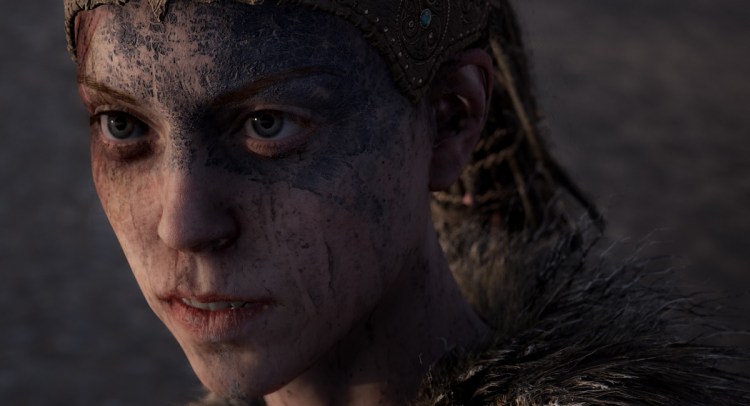We had another wonderful year of creativity and smash hits in the $116 billion game business in 2017. My favorite games of the year reflect that games are still my favorite entertainment medium, one that I spend more time with than any other. This list isn’t full of Oscar-like narratives, as if games really want to be like movies. They are a mix of game types: shooters, multiplayer melee fests, grand adventures, platformers, and strategy games.
My experience with Cuphead, where the internet blasted me for failing to play it properly, is a good reminder that I should spend as much time playing games as writing about them, as the expertise comes from both writing and playing. My list still focuses on the games that I enjoy, as opposed to the games that other people think I should play. I’ve completed campaigns for all of these except Cuphead and The Legend of Zelda: Breath of the Wild.
My list is full of games that were commercial successes, but it starts with an indie from Ninja Theory. I’ve considered games on all platforms, and I don’t have any virtual reality or mobile games on this list. I’m still playing Clash Royale, Pokémon Go, and Dawn of Titans on mobile, but those didn’t come out this year. As for VR, one of my kids would surely put Job Simulator from Owlchemy on the list.
For me, 2017 was a year of the triumph of PC and console games. Cross-platform titles are the bulk of the winners, but Microsoft-, Sony-, and Nintendo-exclusive games are represented on the list. I spent time with Star Wars: Battlefront II, Uncharted: The Lost Legacy, Mass Effect: Andromeda, The Last Day of June, Player Unknown’s Battlegrounds, Super Mario Odyssey, and Destiny 2. But those games fell short of making it on my list. It’s safe to say there were a ton of great games that came out this year, with many that I didn’t have time to play.
June 5th: The AI Audit in NYC
Join us next week in NYC to engage with top executive leaders, delving into strategies for auditing AI models to ensure fairness, optimal performance, and ethical compliance across diverse organizations. Secure your attendance for this exclusive invite-only event.
What remains are the games that struck me for their beauty, their gameplay, their wisdom, their stories, their characters, and their light moments that helped me escape from the real world, if only for a short time. Some of these games have huge open worlds, and I honestly I might have liked them better as straight-shot single-player stories. I don’t have time to play all the games I want to play, nor do you. But you might want to try some of these out, if only because you’ll enjoy the journey as well as the endings. Remember, it should be no shame at all that you don’t play these games with great skill or you can’t finish them.
For the sake of comparison, here are my favorites from 2016, 2015, 2014, 2013, 2012, and 2011. In each story below, the links go to our full reviews or major stories about the games. And be sure to check out the GamesBeat staff’s own votes for Game of the Year and the best individual favorites of the staff soon.
1) Hellblade: Senua’s Sacrifice
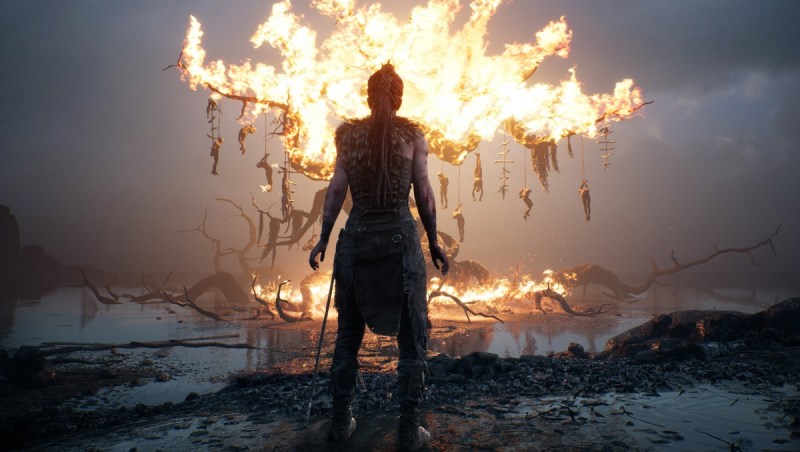
Above: Real or madness? It’s all too real for Senua in Hellblade.
Developer: Ninja Theory
Publisher: Ninja Theory
Platforms: PC, PlayStation 4
Hellblade captures the journey of its main character, Senua, into madness. The Celtic warrior struggles with inner demons as she goes on a quest to save her beloved from the mythical Norse underworld. It is a terrifying game, thanks in no small part to the screams of Melina Juergens, who played the role of Senua and won an acting award for her first-ever acting role.
That fine acting job contributed to the realism. The extremely detailed facial animations made this the first game for me that crossed the “uncanny valley,” which posits that the more realistic you try to make the face of an animated character, the more weird and artificial it seems. Senua’s face expresses raw emotion, even if she isn’t speaking.
I liked how everything came together in Hellblade to support the idea of getting the gamer to empathize with Senua in her psychosis, a mental illness condition where she sees things that other people can’t see. It didn’t just tell you a story like a “walking simulator.” It lets you walk in her shoes. Senua solves puzzles by looking a landscape from a different perspective. She is haunted by voices in her head and chooses to listen to her own inner voice. As Senua descends into the underworld and battles with monsters, you can’t really tell what’s real and what’s not. The dramatic tension is enormous, as the nearby sounds of creatures in the darkness are as terrifying as the scenes where you actually battle a demon in the darkness.
Four years in the making at an indie studio, the game was funded in part by biomedical research charity Wellcome Trust, which gave Ninja Theory a $395,000 grant to do research on mental illness. That was money well spent, and gamers are the beneficiaries.
2) Call of Duty: WWII
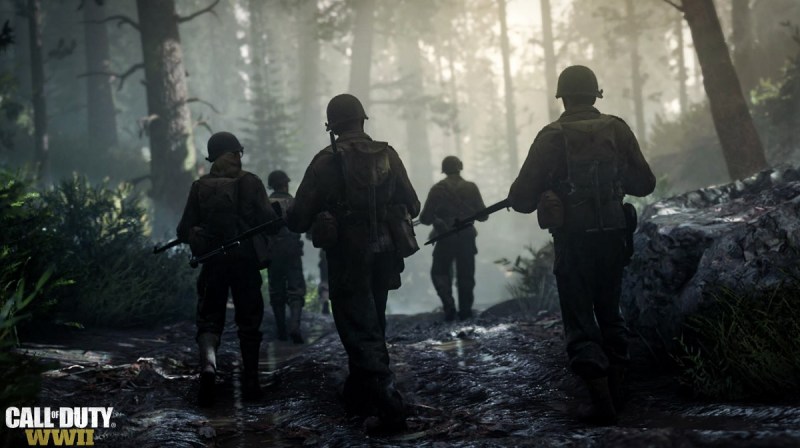
Above: You are part of a squad in the 1st Infantry Division in Call of Duty: WWII.
Developer: Sledgehammer Games
Publisher: Activision
Platforms: PC, PS4, Xbox One
The return to “boots on the ground” infantry combat was the right decision. By taking Call of Duty back to World War II, Sledgehammer helps us appreciate why this series became a $15 billion franchise. It puts you in the roles of individual infantry soldiers, the ordinary people who learn what it means to become a hero, without celebrating war or forgetting about all of its horrors.
The single-player campaign follows a squad in the Fighting First division of the American army, and it conveys what much of the war was like across so many different theaters of war and types of battles, from the landings at Omaha Beach to the infiltration missions of the French Resistance. The story shows that a hero is not a lone wolf, but somebody who does something for others, like a friend, a squad, or the larger cause of the war. And it shows you can redeem yourself, even after a moment of cowardice.
Multiplayer continues to hold my interest. I’m at level 47, with a kill-death ratio of 0.73, which means I get 73 kills for every 100 deaths. It’s not great, but it’s actually a lot better than I did last year at 0.40 with Call of Duty: Infinite Warfare. Multiplayer combat isn’t impossible anymore, and it has a hugely entertaining new War Mode, which is a story-based, multi-part battle between two sides.
I felt like Star Wars: Battlefront II’s appeal declined after the loot crate controversy, which is a shame because the game was good. And I also felt like its multiplayer wasn’t as sticky as Call of Duty’s. I thought that I would put Wolfenstein II in the second position earlier, but I decided to put Call of Duty ahead of it because I am enjoying multiplayer so much.
There is a disconnect between the honor and remembrance of the single-player campaign, and the esports nature of multiplayer. It kind of makes that idea that the game is about remembering the sacrifice of the Greatest Generation seem a little strange. But if this game is even a little bit as important as Saving Private Ryan or The Longest Day was for an earlier generation, well, I can go along with that mission.
3) Wolfenstein II: The New Colossus
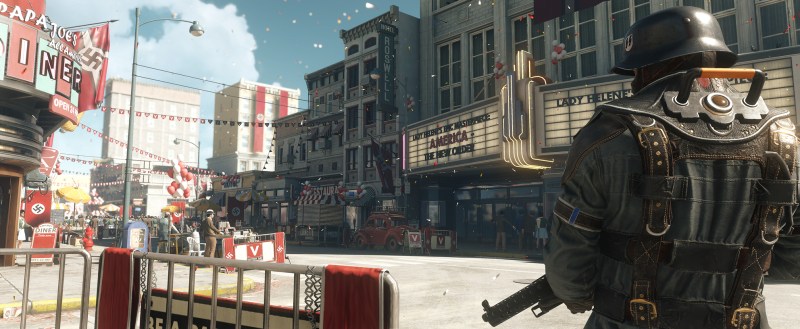
Above: Wolfenstein II: The New Colossus
Developer: Machine Games
Publisher: Bethesda
Platforms: PC, PS4, Xbox One
Wolfenstein II proved that a single-minded focus on developing a great single-player campaign is still a great strategy for a triple-A game studio. And this developer’s message about what would happen if the Nazis took over America is surprisingly relevant in American society in 2017.
The first game, Wolfenstein: The New Order, had you fighting as William “B.J.” Blazkowicz, who fell asleep like Rip van Winkle for 14 years, awaking to a Nazi world empire in 1960. With the sequel, you’re back to fighting Frau Irene Engel, the antagonist whose performance in the first game reminded me of a scene from Inglorious Basterds.
Wolfenstein has what Call of Duty: WWII and Battlefront II don’t have: a real villain that you can hate. It’s not enough just to have Nazis or, ahem, stormtroopers to eliminate. It keeps you engaged and immersed in the story of starting a new American Revolution to overthrow the Nazis. I loved the stark imagery of the Nazis in America, where Nazified culture and police state visuals abound.
The campaign has a 11 main missions that take a dozen or so hours to play, though it can take you longer if you play the bonus content or take a stealth approach. While the story and its 20-minute cutscenes are great, what really gets my motor running is the feel of the weaponry. As your enemies become more heavily armored and formidable, so do your own arms. You can melt Nazis in this game, and it feels good.
The story took a few interesting twists that made good points about how Nazi-like Americans could turn into sympathizers, and it brought a fitting ending in the final encounter with Frau Engel. It also had a touching angle with her daughter, who made the point that we shouldn’t vilify every person in the enemy camp.
4) Horizon Zero Dawn
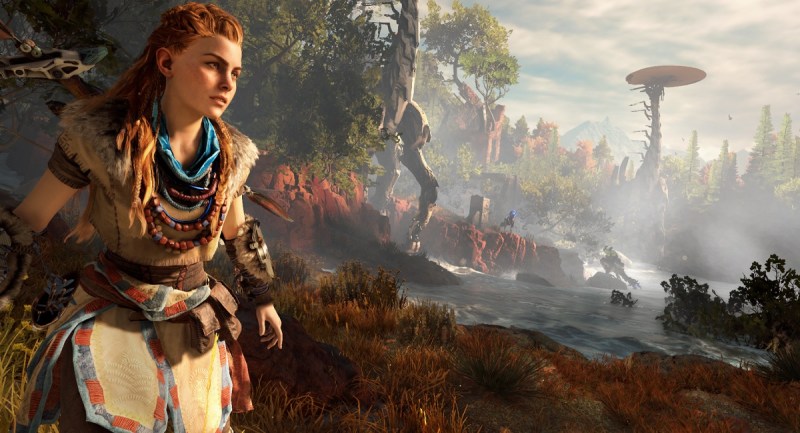
Above: Aloy lives in a beautiful open world in Horizon: Zero Dawn.
Developer: Guerrilla Games
Publisher: Sony
Platform: PS4
I spent a lot of time in the vast world of Horizon Zero Dawn, which took seven years to make. When I finished the main story of the single-player campaign, I realized that I was only 32 percent done with the content. By contrast, when I finished Red Dead Redemption years ago, I was 70 percent done with the content. This is so huge that you could go back to it and be surprised at what you passed by.
What made this game delightful is that it was a huge investment in a new world. You play as female warrior Aloy, trying to unearth the mysteries about why mechanical dinosaurs are roaming the planet and humans are almost extinct. Much of the time, Aloy has to slink about and run from giant beasts. But my favorite battle was one where I fired a portable mortar at a horde of attacking creatures.
The story is riveting one where Aloy is in search of answers about her own identity and how that is intertwined with the fate of the world. Unlike other postapocalyptic games, the world is lush and full of life, as the Earth has regrown itself in the wake of humanity’s near extinction. You can stop and challenge herds of dinosaur-like creatures at any time, but if you don’t have the right weaponry or tactics or traps, you’ll die. It also has an intriguing frenemy who is with you most of the way, and that character plays a very interesting role in the finale.
Great world. Great character. Great story. And great gameplay. I agree with our reviews editor, Mike Minotti, that this is the start of a great new franchise for Sony and Guerrilla Games.
5) What Remains of Edith Finch

Developer: Giant Sparrow
Publisher: Annapurna Interactive
Platforms: PC, PS 4, Xbox One
Giant Sparrow‘s Ian Dallas has shown that he has a great creative spirit, first with The Unfinished Swan, which was my favorite game of 2012. And now with Edith Finch, his team has created a bizarre but wonderfully creative tale about the accursed Finch family. It is a light horror game, with disturbing thoughts about what life was like for the various Finch family members in their last moments before death.
You spend your time as Edith Finch, going through the old home that has been built up like the Winchester Mystery House, with one addition after another. The various bedrooms are locked until Edith finds a way in, and within the rooms she finds the stories of the deceased. I was particularly struck by the combination of gameplay controls with the music and story of Lewis’ death in a fish cannery. I also loved the story about Barbara, who disappears into the pages of a horror comic book. The game alternates between these sad tales of the last moments of someone’s life with the Gone Home-style exploration of the vast Finch home.
I can’t say I’m a fan of the ending, but the lack of a clear explanation to the mystery made me think more about the collection of stories along the way. In fact, Dallas hinted a while ago that he knew that he didn’t want to create an ending until late in the development. But Giant Sparrow did succeed in creating an experience in a video game that I’ve never had before.
